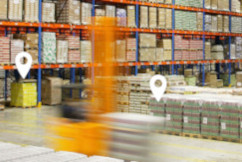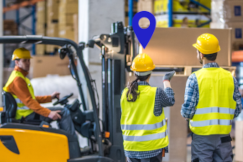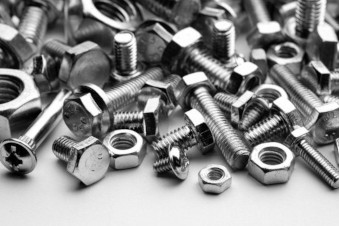Towards Intralogistics 4.0
By intralogistics we mean that branch of logistics that concerns what happens inside
the factories and which includes all the activities related to the movement of goods and materials
in the various company areas.
The global market is changing rapidly, requiring manufacturing companies to
increase efficiency,
flexibility and productivity in all company processes, and consequently also in intralogistics.
With the emergence of the need to manage increasingly large quantities of data
and goods, it has become essential for intralogistics to activate a transition
from a 4.0 perspective. This transition, due to the complexity of the sector, requires the use of many different
and complementary technologies, each capable of improving operations along the entire chain of its processes.
Digital Transformation: opportunities to achieve operational excellence
Precisely because of its central and decisive role, today more than ever,
intralogistics presents itself as one of the main actors of the new "Industry 4.0" paradigm.
Intralogistics 4.0, as already mentioned above, takes advantage of various technological solutions in
order to optimize all phases of the work: from organizational and strategic management operations, to
storage, to the handling of goods. Shelving, for example, can be automated, plants can be equipped with
robotic arms, and software allows processing the data detected by sensors mounted on plants, shelves, and
vehicles. All this allows the transition from a mainly manual operation to a digitized and data-driven one.
Thanks to these technologies, it is possible to monitor the movement flows of the goods and to manage the
stock and warehouse with simplicity, thus being able to predict the volume of demand, automating the operating
cycles and allowing effective management of the information relating to the goods.
One of the crucial elements in the intralogistics digitization process is traceability. In fact, the asset and people localization and tracking function is the starting point for being able to implement warehouse management software, with which it is possible to have complete control over all the movements of goods within the company during various phases (receipt from the supplier or from the production department, deposit, collection, shipment).
IoT and RTLS for intralogistics
For this tracking to be possible, it is necessary to adopt localization systems
RTLS, whose architecture
consists of mobile IoT devices (such as BlueUp tags),
fixed antennas and management
software. These systems make possible to generate valuable information for the optimization of product,
vehicle and people flows. Mobile devices must be applied on assets or people that need to be tracked.
Tags are active devices equipped with a battery, and with intervals of a few seconds (the interval is
established on the basis of tracking needs) they send autonomously some information (such as the unique identifier
and any other status information, such as battery level) to the antennas. The latter, in turn, send the data received from the tags
to the management software which, thanks to a dedicated algorithm, calculates the position and makes it viewable on a digital map.
Knowing the positioning along the supply chain of the various "objects" that make up company assets, and having the state of the art under control,
is the first step in identifying optimization strategies that make work safer, more efficient and more productive, allowing
to professional figures such as the Logistics Manager to have complete information on everything that happens in the monitored area to make informed decisions.
The possibility of locating any object, person or vehicle in real time within a warehouse allows for a series of advantages to be obtained, such as
avoiding "bottlenecks", defining the best routes for operators within a warehouse, make the movement of vehicles and people within the workspace safer.
Until now, only "location" and "positioning" data have been referred to, but the information that can be acquired
from IoT devices may not only concern the position of the goods.
The devices can be integrated with sensors of various types, and in this case it is possible to detect data relating to the state of what
is tracked (movement, alarm events,…) or environmental parameters (temperature, humidity, …).
It is clear that the role of the IoT in logistics is increasingly important. Indeed, a study by Research and Markets
indicates that the Internet of Things (IoT) market in the logistics sector will grow approximately 13.2% each year through 2030,
rising from a turnover of 34,504 million dollars in 2019 to 100,000 million in 2030.
The acquisition of this large amount of information, which includes position data and data from other types of sensors, makes possible to obtain all the information necessary to create a real “ digital twin”, i.e. a virtual representation of a given physical environment, just like a warehouse. The Digital Twin is a valuable tool to be able to test and understand how the systems we are monitoring behave in a virtual simulation space.
IoT and RTLS can therefore improve logistics processes in various aspects:
• optimization of delivery times;
• increase in process control (from the order, to the goods department in the warehouse, up to delivery to the final customer);
• optimization of warehouse performance;
• improvement of goods handling;
• synchronization of internal orders;
• monitoring of the relationship between production and demand;
• implementation of picking to optimize the movements of the operators;
• reduction of bottlenecks, waste and storage volume;
• reduction of errors and operating costs;
• increased flexibility and operational efficiency;
• automation of numerous operations;
• manpower optimization;
• increased operator safety.
Let's not forget about sustainability!
In addition to smartness, intralogistics must also aim to be
increasingly sustainable. Sustainable intralogistics refers to the implementation of environmentally
friendly logistics processes.
The goal is to always find new methods of production, storage and distribution of products in order
to reduce the environmental impact of carbon, pollution and waste at all stages of the supply chain.
RTLS are an excellent solution also from this point of view: thanks to them, in fact, it is possible to
reduce energy consumption and waste. Thanks to sensors for room occupancy monitoring, for example, it is
possible to automatically check the presence/absence of people within the various areas. This information
allows to keep the lights on only in case of the presence of operators in a certain area, thus
reducing the waste of electricity.
With air quality sensors, combined with the presence/absences control system, it is possible to turn on the ventilation systems only if necessary.
Furthermore, by monitoring the journey of the forklifts, it is possible to optimize the routes, and therefore
consume less fuel and reduce pollution. By implementing all these features, energy savings, greater sustainability and
cost reduction can be achieved, and at the same time, increased supply chain performance can be achieved.
BlueUp RTLS solutions for intralogistics
The RTLS solutions offered by BlueUp are all based on the Bluetooth® LE standard or compatible wireless protocols.
BlueUp offers three different RTLS solutions that differ in performance, cost and installation complexity.
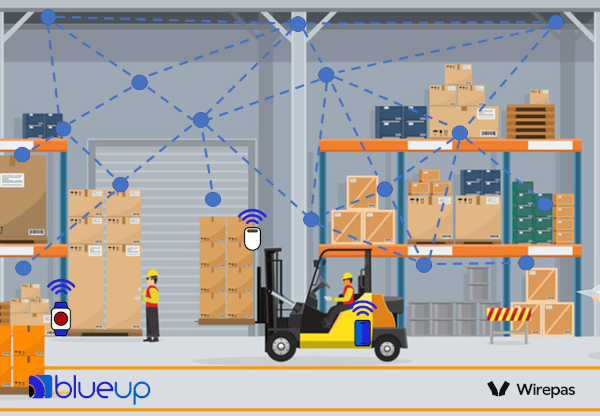
MeshCube is a unique solution on the market, with a completely wireless infrastructure based on a communication network in Wirepas Mesh 2.4GHz technology. With this technology all design, installation and wiring costs are reduced to almost zero, which makes it extremely economical and suitable for logistics applications concerning automatic inventory, asset tracking, distributed monitoring via sensors.
LocateBLE allows the localization of assets and people in real time through algorithms based on RSSI (Received Signal Strength Indicator) and trilateration. The rewarding feature of LocateBLE is its independence from hardware: the platform, in fact, is designed to be compatible with multiple types of Bluetooth® Low Energy antennas on the market: Bluetooth® LE beacon gateway, WiFi access point with Bluetooth® LE interface, Zigbee or mesh modules with support Bluetooth® LE extension. This flexibility makes LocateBLE suitable for a wide range of Real-Time Asset Tracking applications in the logistics sector.
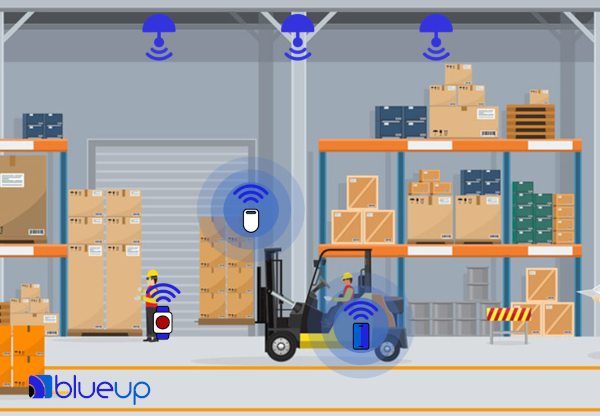
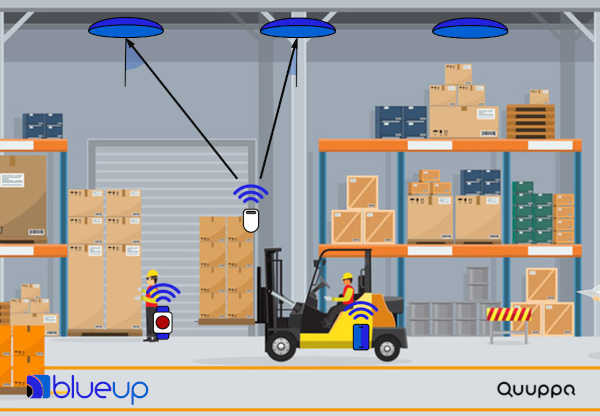
Finally, in case location accuracy is the key requirement,
AccuRTLS is the ideal solution.
AccuRTLS provides state-of-the-art performance, with real-time tracking and accuracy down to a few tens of centimeters
in a real operating environment, thanks to RTLS Bluetooth® LE Angle of Arrival technology, developed
by Quuppa, of which BlueUp has been a partner since 2017.
For this technology, BlueUp develops and produces Quuppa Approved tags,
certified directly by Quuppa to be fully compatible on a functional, performance and mechanical level with Quuppa technology.
Do you want to find out if BlueUp solutions can help you in your reality? Contact us to find out more! 😊
Related content

